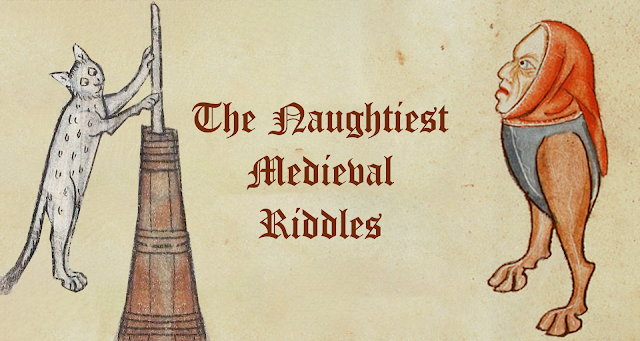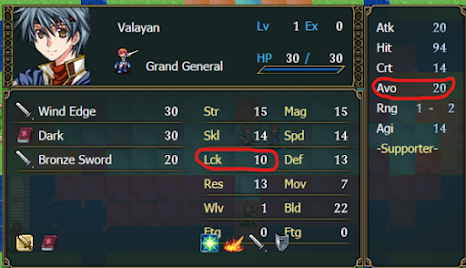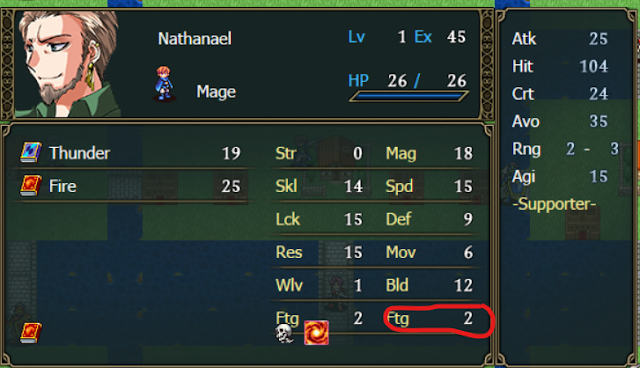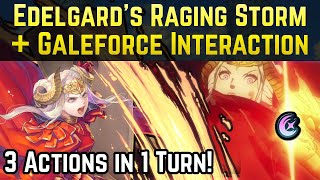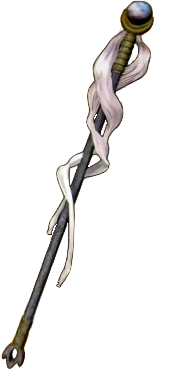Hey everyone! It's been a while since I last posted. Just wanted to let everyone know that I'm currently working on creating a game of my own in SRPG Studio. I wanted to not only let you guys know that this exists, but also show a little bit about what I've made so far. So far, I've been working on the gameplay. The sprites that you see below are the default sprites of SRPG Studio. Yes, I know they're bad, and I will replace them with new ones and import better sprites when the time comes.
So here are a few mechanics that I'm implementing:
1. Berwick Saga style Counterattacking
During battle, if the defender takes damage, they cannot counterattack. The only way to counterattack an enemy is by either
a. Dodging the hit (while also having a weapon with the same range)
b. The swing landed, but it dealt 0 damage.
c. The defender has a skill that lets them counterattack.
Like Berwick Saga, only one character in this game has the skill that gives them a traditional Fire Emblem style enemy phase. In this game, your Armor Knight Loshnor is the only character that can do that. This should go a long way toward incentivizing Player Phase oriented gameplay.
2. Changes to the Formula
2a. Double Attacking
In order to double attack, the formula is now this: Speed - Skill. If the attacker's Speed is 4 points higher than the Enemy's Skill, the attack double attacks that enemy. Speed only causes double attacking, but it's the Skill stat that prevents a unit from being double attacked. Let's use an example.
Here are the stats of the player's starting mage, Nathanael:
Here are the stats of an enemy Light Mage.
In a traditional Fire Emblem game, Nathanael wouldn't be able to double attack the enemy Light Mage. However...
Since Nathanael's speed was 5 points higher than the enemy Light Mage's, he can double attack. This should hopefully make the Skill stat more valuable.
2b. The Con (Bld) stat now deals damage
Here's how the formula works: [(Attacker Con - Defender Con) / 2]. Using the above example, Nathanael's Build stat is 12, while the Enemy Light Mage has a Build stat of 8. So, to use our formula:
12 - 8 = 4 / 2 = 2.
Nathanael gets to deal 2 extra points of damage, while the Light Mage deals 2 fewer points of damage.
2c. Luck determines Avoid, not Speed
The Avoid Formula is (Luck x 2). The Speed stat only does one thing in this game: It determines double attacking. Skill prevents double attacking, and Luck determines whether a unit can dodge or not.
2d. Thracia 776 Style Critical Hit Formula
Skill Stat + Weapon Critical Hit Rate
Critical Avoid: Luck / 2.
You can get bonuses from skills and supports, but this is basically it. This essentially means that it'll be easier to increase critical hit rates in this game. Hopefully that should make the Luck stat more valuable.
Other Fun Mechanics in this Game
a. Thracia 776 style Capturing
b. Thracia 776 style Fatigue
Just like Thracia 776, every character that participates in a round of combat, heals, and steals increases their Fatigue by a certain amount. When that fatigue becomes greater than or equal to the character's max HP, they have to sit out the next round.
One major change that this game makes is that every character has a unique rate of fatigue. For example, Nathanael has a fatigue rate of 2. That means that whenever he participates in a round of combat, his fatigue increases by 2 instead of 1.
Will there be Stamina Drinks?
Not in Lunatic Mode. Hard Mode will only have a small handful of them. I can't decide if I just want to turn off fatigue for Normal Mode or make it so easy to get Stamina Drinks that it's not much of a thing. Hmmm....
c. FE 12 Style Lunatic Mode Bonuses
So here's something that Fire Emblem 12 did for its Lunatic Mode that I really liked:
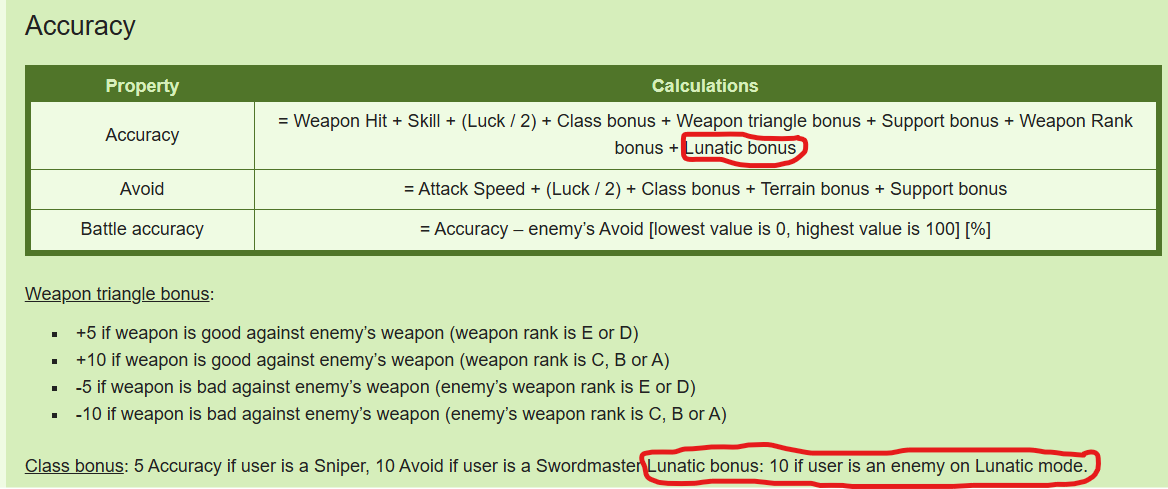
Giving enemies an extra + 10 Accuracy made dodge tanking more difficult and helped make enemies more threatening. I took notes from that design and decided to emulate it, but with an extra twist...

I boosted the damage they'd deal by 5! This should help to make enemies more threatening.
On that note, I'm trying to take notes from Fire Emblem 12 and make enemy offenses so powerful that they should be able to 2 - 3 Hit KO the cast with relatively good accuracy.
Other Mechanics
- No Ambush Spawns: Enemy reinforcements happen at the end of the enemy turn! You won't have to worry about any BS here.
- 2 RN system: Accurate hits will be even more accurate! With enemies having good hit rates, this system should make it more likely for them to hit the player's units. Here's a sample of some of the enemy hit rates in just the first chapter, alone:
Fun fact: Both of those enemies had Weapon Triangle disadvantage. Here are the Weapon Triangle Bonuses in this game:
+ 4 Damage, + 20 Hit.
Nathanael versus an Archer Boss.
The First Three Characters of the Game
Let's take a look at the first three characters of the game that the player starts out with:
Valayan - The Main Character
Note: Valayan is not a noble, nor does he have a special lineage. He's essentially a "nobody" who rose through the ranks of the military.
He uses Swords, Dark Magic, and can equip shields. He also starts with 7 Movement, the highest Movement a Tier 1 unit can have. Here are his skills:
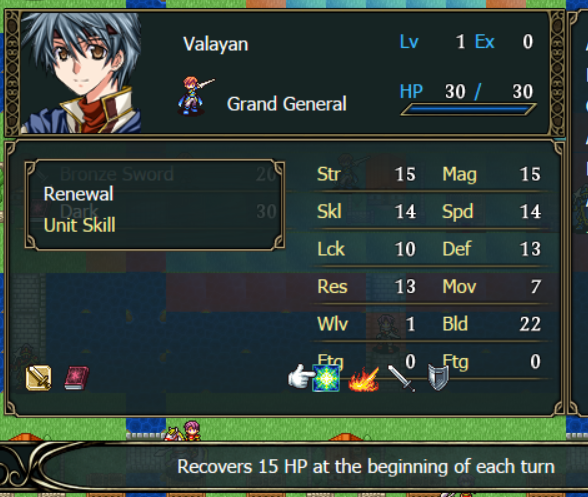
I tried to get Renewal to be a percent of a unit's max HP. So far, I haven't been able to do that. As a result, Renewal's really powerful in the early game but will lose value further into the game.
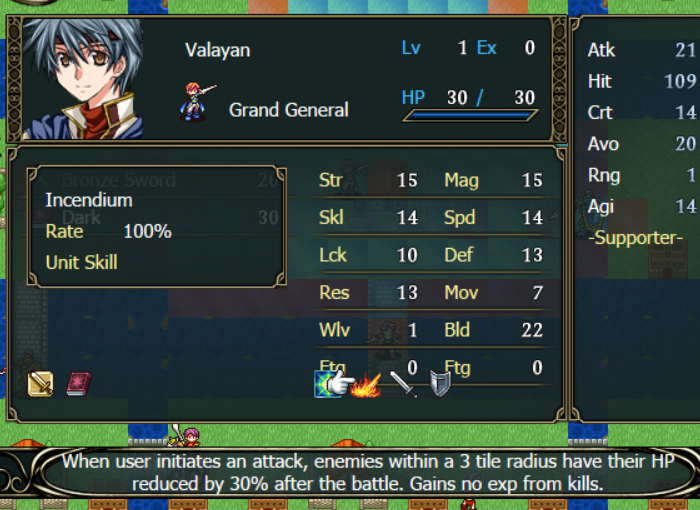
Unlike Savage Blow or Poison Strike from Fates, this skill can land kills. However, he won't gain any experience from those kills.
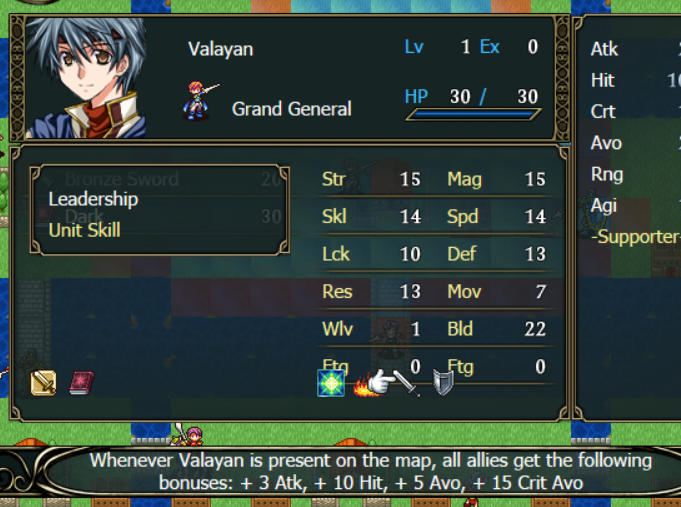
These stat buffs activate any time he's on the map. He doesn't even need to be within a certain distance from any allies.
Nathanael - The Game's Squishy Mage
Here's a list of his skills: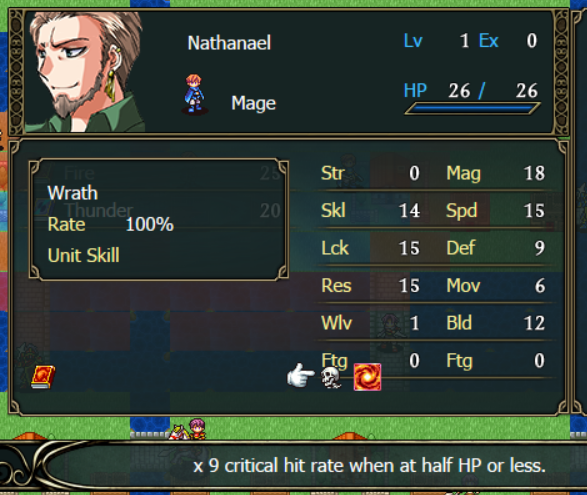
This version of Wrath is modeled after the FE 5 style of Wrath that always activated when a unit's HP was half or less. I'm hoping this should make him one of the most powerful units in the game.

So did I make him worth using?
Loshnor: The Armor Knight
I realize that Armor Knights are traditionally seen as bad units, so I've come up with a few ways to hopefully make Loshnor a good unit.
# 1: He's the only character in the game with a traditional Fire Emblem style Enemy Phase
I already brought this up earlier, but he's the only character in the game that can counterattack an enemy even if he takes damage. Sherpa, the only character in Berwick Saga with a traditional Enemy Phase, was considered a top tier character and this was a big reason why. I'm hoping that logic works for Loshnor.
Me: Is he good yet?
LTC Players: No.
# 2: He should be able to reach consistent One Round KO Thresholds
I gave him access to a really strong Prf rank lance that can automatically double attack enemies.

I'm planning to make a lance that automatically double attacks that only Armor Knights can use too.
Me: Is he good yet?
LTC Players: No.
# 3: He has Good Movement
His Base Movement is 6, the same as any other infantry unit in the game, and he gets exclusive access to this:
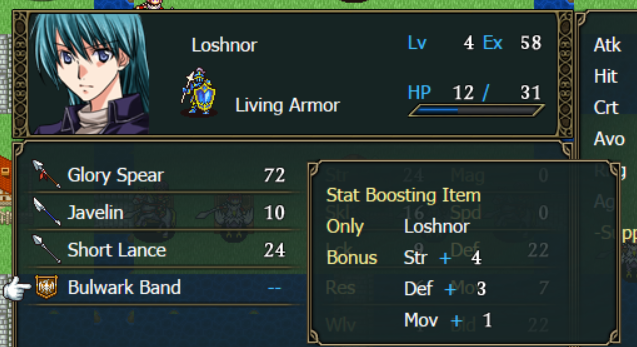
Yes, he gets access to an item only he can use that increases his Movement by 1. This means that he'll have 7 Movement, just like mounted units and fliers.
Me: Is he good yet?
LTC Players: No.
He also has access to Paragon:

Only one other unit in this game gets Paragon, and that's the game's Est. Increasing experience gains should play a big role in making him good.
IS HE GOOD YET?!
And here's the map objective of the first map of the game:
There's not going to be any Casual or Classic mode in this game. The player will be forced to keep everyone alive. Have fun with that additional pressure.
These are not the only mechanics and stuff that I've got in the game, but I hope that's enough to whet your appetite. I'm really excited to make this project! I'll post updates on my progress from time to time.
